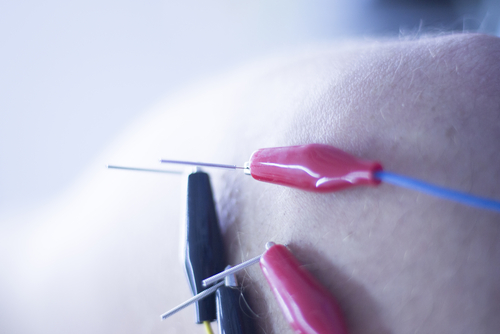
Electric stimulation in combination with traditional Chinese acupuncture (electroacupuncture) may be an effective method to reduce pain in fibromyalgia patients, according to the conclusion of a systematic review that assessed the effects of electric stimulation on fibromyalgia pain.
The study, “Electric Stimulation for Pain Relief in Patients with Fibromyalgia: A Systematic Review and Meta-analysis of Randomized Controlled Trials,” was published in the journal Pain Physician. The study’s protocol (CRD42015025323) was registered in PROSPERO, the International Prospective Register of Systematic Reviews.
Treating fibromyalgia patients is mainly focused on providing pain relief and improving their physical abilities to perform daily life tasks and their overall quality of life. Fitness, strengthening exercises, and electric stimulation (ES) are some of the nonpharmacological therapies recommended in recently published treatment guidelines.
ES is a treatment option used to enhance the natural pain inhibition systems. This method can be invasive, such as electroacupuncture, auricular electroacupuncture, and electrical heat acupuncture — or noninvasive, such as transcutaneous electrical acupoint stimulation, auricular transcutaneous electrical acupoint stimulation, and transcutaneous electrical nerve stimulation (TENS). ES has been shown to effectively reduce pain in several acute and chronic pain clinical conditions, including fibromyalgia.
The authors of this systematic review evaluated the effects of TENS and electroacupuncture, alone or combined with other treatment techniques, for fibromyalgia pain relief. The review was based on results from nine randomized clinical trials, which included information from 301 fibromyalgia patients.
To be included in this review, the trials had to be performed according to the American College of Rheumatology (ACR) recommendations for fibromyalgia diagnosis, and had to include a treated fibromyalgia patient group along with a control group that did not receive ES.
Six trials compared 93 patients who received TENS treatment with 87 controls, and three trials compared electroacupuncture treatment on 61 patients and 60 untreated, or control, patients.
TENS stimulation frequencies and pulse duration varied among the studies. It ranged from 15 to 150 Hz, with duration from 0.7 to 2 microseconds. The time of intervention ranged from 20 to 40 minutes. Electroacupuncture stimulation frequencies ranged from 1 to 99 Hz, and the time of intervention ranged from 20 to 30 minutes.
The authors found that ES treatment was associated with a reduction of pain in fibromyalgia patients compared to the control group. Looking specifically at TENS and electroacupuncture treatments, they found that TENS had no significant effect on pain relief, but electroacupuncture treatment demonstrated a decrease in pain in fibromyalgia patients compared to controls.
They could not find any improvement in quality of life after TENS treatment alone or in combination with other types of therapy. Also, ES treatments were unable to reduce fatigue in fibromyalgia patients. The small number of studies included in the analysis and the reduced sample sizes could account for these results, the authors cautioned.
“This meta-analysis indicates that there is low-quality evidence for the effectiveness of ES on pain relief in patients with [fibromyalgia],” the authors wrote. “However, moderate-quality evidence for the effectiveness of [electroacupuncture], combined or not with other types of treatment, was found for inducing pain relief.”
Additional studies with proper methodological quality and long-term follow-up are required to assess pain, fatigue, and quality of life in patients with fibromyalgia, the authors wrote. Still, they recommend that invasive electroacupuncture treatment could be applied to fibromyalgia patients as a pain relief strategy.
Source:https://fibromyalgianewstoday.com/2017/02/15/electroacupuncture-treatment-appears-reduce-fibromyalgia-pain/











